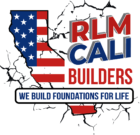Typical Issues with the Concrete Surrounding Your Residence
Over time, your concrete may be subjected to increasingly difficult conditions. Are there any specific types of damage you should keep an eye out for?
All of your home’s concrete exterior structures, such as your pool deck, patio, and driveway, are more vulnerable to damage than they appear to be at first glance. Because concrete absorbs water at a much faster rate than most people believe, it is susceptible to cracks and other types of damage.
Fortunately, you don’t have to go it alone when it comes to protecting your concrete. If you want to know what common problems your concrete is susceptible to and how best to prevent that damage from taking root, you should seek the advice of local experts.
Typical Issues with Fresh Concrete
When you buy your first home, it can be scary. In order to keep up with everything you have to do, it’s impossible to maintain the level of care your concrete requires. As a new homeowner, you may save yourself a lot of time and money if you take a proactive approach to some of the most common concrete issues.
new-homeowners may encounter some of the most common concrete-related issues.
Early Cut Injury
The sensitivity of concrete has already been mentioned. It can become brittle and crack if it doesn’t have the proper amount of air and moisture to dry properly. Alternatively, if you cut concrete while it’s still wet, you may have to deal with additional edges that chip or otherwise put your family at risk for injury.
Cracks
Errors in the initial pour or the work of heavy rain and flooding can cause cracks in your concrete. Cracks on the surface of your concrete aren’t dangerous, but that doesn’t mean that they aren’t a good indicator of what your patio’s future damage might be. If you see cracks forming in the concrete around your house, act quickly to patch up the damage and keep it from getting worse.
a Poorly Installed
Pouring concrete for home features on your property can lead to mistakes by construction crews. It’s possible that your concrete was poured unevenly in some instances. In addition to increasing the risk of cracks and other early damage, an uneven pour also puts the safety of your family in jeopardy. There are many times when this kind of work needs to be taken down and replaced immediately.
Probable Consequences in the Future
Some common concrete issues don’t surface until five to ten years into a residence. Long-term issues can be as dangerous, if not more, than immediate concrete issues. You may have to deal with the following difficulties:
Crawl through the concrete
Temperature and moisture can have a negative impact on your concrete. When the temperature in your area changes, concrete structures outside, like your patio or pool deck, will expand and contract at the molecular level. Concrete’s size and shape can literally change due to these atomic shifts. It’s called “concrete crawl” because your concrete can appear to crawl toward your house or out into your yard.
Concrete crawling, on the other hand, does a lot more damage than just ruining the aesthetics of your outdoor structures. The structural supports of your home can be forced out of their original positions if you move concrete, which compromises your home’s safety. In order to fix this kind of damage, you may need to replace both the concrete that has been damaged and the supports that have been forced out of position.
Erosion of Concrete
When it comes to the structural integrity of your concrete, water and time are both formidable forces. Your concrete can become weaker and eventually crumble under the influence of either of these forces. Your concrete patio or pool deck may begin to separate from the rest of the structure, or your concrete accessories may begin to sink, so you’ll need to take action quickly. In order to prevent further damage, you’ll need to work with professionals who have dealt with similar situations before.
What Is the Root Cause of Your Present Situation?
When your concrete is damaged, there isn’t always a single force at work. Even the temperature in your area can have an immediate impact on your concrete’s stability.
Most concrete problems can be traced back to one common cause: high hydrostatic pressure. When water begins to accumulate around your concrete, a force known as hydrostatic pressure develops. That water has the ability to alter the temperature of your concrete. Concrete, on the other hand, begins to degrade as it is exposed to water and fluctuating temperatures for an extended period of time.
Taking Care of Your Concrete Issues
Confronting hydrostatic pressure and your concrete’s other enemies is no easy feat. For this, there are people who can help you out. If you prefer, you can contact the RLM Retrofit Foundation in your area for help. A contractor can inspect your property with you and provide you with a free estimate detailing what repairs are needed to your concrete or foundation. For a free Foundation Inspection Acton near me , contact us at this time.
The Most Common Issues That Can Affect A House’s Foundation Acton
Which Insect Causes the Most Damage to Houses Acton










